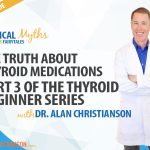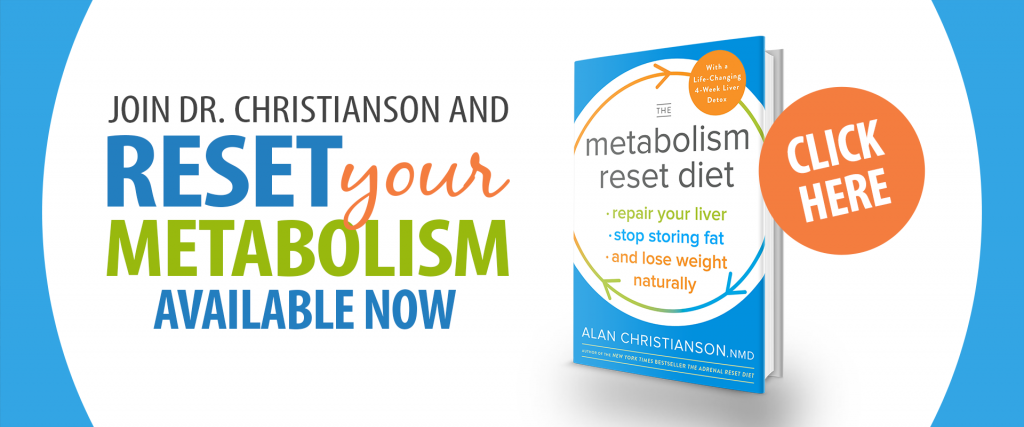It is the biggest question that you might not yet have the answer to: Do you have fatty liver? Today, I want to introduce you to this common liver disease, and how you can treat it the right way so that you can get back to feeling better than ever.
- Have any questions?
- 480-767-9018
- support@in-goodhealth.com

Podcast – The Truth About Thyroid Medications: Part 3 of the Thyroid Beginner Series
March 18, 2024
Update – Case Study: Keto-Induced Hypothyroidism
March 23, 2024
Podcast – The Truth About Thyroid Medications: Part 3 of the Thyroid Beginner Series
March 18, 2024
Update – Case Study: Keto-Induced Hypothyroidism
March 23, 2024Home > Exercise/Fitness > How Do You Know If You Have Fatty Liver?
How Do You Know If You Have Fatty Liver?

Product Recommendation: RS Complete benefits GI health through its ability to support microbial balance and proper intestinal permeability and integrity. Additionally, this formula may help support optimal blood sugar and insulin levels, appetite control, and cardiovascular health. Click Here

Fatty Liver Disease
First, I want to point you in the direction of a paper I wrote on fatty liver disease (1). It will really help your baseline knowledge, as we continue our conversation today to build on what we already know about this disease – and what you can do about it.
The basics are that liver disease is the fourth leading cause of death in the United States among 45 – 54-year-olds and, sadly, affects more than 6 million children. As childhood obesity has gone up, researchers are expecting it to cause more complications in kids in coming years.
Fatty liver is a sign that the body is not burning its fuel right. The more fat your body stores, the more you are growing stuff you probably do not want to grow and the more you feel far from your best. When you store more, you are more apt to have more fats, especially triglycerides, get stuck in your liver and enlarge it.
A healthy liver has about 1-3% fat. Once you get over 5% things start to go wrong. Once you get over 10%, disease usually sets in. All this fat can lead to problems like a poorly functioning liver, liver tissue scarring and, even, liver cancer.
Symptoms
Fatty liver disease is known to cause a lot of common, albeit troubling, symptoms in the body. These can include:
- Fatigue
- Abdominal swelling
- IBS
If we take this a step further, we may also see some common complications stemming from fatty liver disease, such as:
- Diabetes
- Cirrhosis
- Heart disease
- Liver cancer
Bottom Line: The big thing that I want you to take from this is that fatty liver disease is not easy to diagnose. That is why so many people go undiagnosed because common symptoms lead to common complications – it can often be hard to get down to the root cause.
Diagnosing Fatty Liver Disease
The only “perfect” test for this disease is a liver biopsy. The truth is, though, that nobody would perform a liver biopsy for screening purposes (this would only occur in the case of someone looking to donate liver tissue to a loved one).
Funnily enough, that is how we have been able to see just how common this disease can be. Lots of folks, with no liver damage, who want to donate need to make sure that their liver is in tip-top shape so that it can be donated.
Key Insight: In those cases, about 40% of patients have had fatty liver disease.1 This really speaks to the overall trickiness of the disease itself, because it can be so hard to diagnose in the body – it really helps to get a better idea to know if you have it or not.
Fatty liver disease is associated with body weight. Although lean folks may have fatty liver, it is most prevalent in those who are obese. Of those who are obese, over 95% of them will likely have fatty liver.2
If your weight is good though, you are not necessarily safe. Please do not think that you are completely out of the loop, without working to understand where you stand with your liver.
There is also a risk for those who have high triglycerides. Of those with high amounts of triglycerides, 53% may currently be dealing with fatty liver.3
Bottom Line: Fatty liver disease is common, and it is often misdiagnosed (or underdiagnosed), in general. First, we will discuss more about what it does in your body, and then we can cover how you can tell if it is affecting your health.
Liver & Metabolic Rate

What is really going on in your body when we discuss fatty liver? Basically, your liver is the hub for all of the fuel in your body. Each day, let’s say that you burn a total of 10 fuel units to make it through the day.
Let’s say you get 12 units of fuel, per day, from the food that you consume. 10 of these units are used to make it through the day, while that extra 2 are stored in your liver.
The next day, let’s say you get 8 fuel units from your diet. If you needed 10 to make it through, you would pull those extra units from your liver to make up the difference. Please note that this only occurs when your liver is healthy.
Drawback
The drawback here is that the liver is sensitive to environmental toxicants. Data has shown that things like:
- Phthalates
- BPA
- Arsenic
When these toxins combine, they can fundamentally change the way the liver operates. Instead of storing fuel until it’s needed, it alters the liver’s ability to store fuel when it should.
If we think of the liver in its most basic terms, there are essentially 2 types of fuel:
- Glycogen, and
- Triglycerides
While it is important to have both, we know that glycogen is apt to take up more room in the liver. Triglycerides, on the other hand, are far more concentrated (therefore, your liver is able to store a lot more of it).
Toxicants, like the ones I previously mentioned, make it to where the liver is low in glycogen and physically packed with high amounts of triglycerides. This effectively makes less room for glycogen, which throws off the balance that you need.
Why is this a problem? Well, you need glycogen in order to burn triglyceride out of your liver. That means that if your liver is full of triglycerides, with no glycogen, you have no way of removing it from your system.
At some point, if the liver has more than 5% triglyceride by mass, that is what we now know as fatty liver disease.
Bottom Line: The trick to treating fatty liver disease is by turning around that process, and removing the triglycerides that were once taking up valuable space in the liver. The good news is that this is easier than you may think, as long as you have a good way of knowing if you are dealing with fatty liver in the first place.
Fatty Liver Index
This is a marker that I am really excited to introduce to you. Essentially, this is an index which is known to be quite accurate for predicting fatty liver disease (because, as we know, short of a biopsy every other marker is inherently imperfect).
What do you need? All you need are some results and some measurements:
The measurements you need:
- Weight in pounds
- Height in inches
- Waist circumference in inches
The blood test results you will need:
- Fasting triglycerides
- Fasting GGT
Key Insight: Once you have this data, all you need to do is input it into this handy online calculator (Read: Fatty liver index calculator). I have developed this calculator to help simplify the process, where all you need are some basic results and measurements, and you can determine if you are at risk for fatty liver disease.
If your final number is less than 20, your fatty liver risk is pretty low. If it is over 60, you are now at a pretty high risk. In those cases, it would be very smart to follow up with a liver ultrasound to really get to the bottom of what is going on in your body.
If you are somewhere in between, think about your symptoms, if they are relevant, and follow up with your doctor to see if there is anything more there.
Bottom Line: For those who are lower or higher on the spectrum, the answer is pretty clear. If you are somewhere in the middle, it helps to think more about your symptoms and to make the appropriate decisions with your health to safeguard the health of your liver regardless.

Research Updates: Fatty Liver Disease
Since the last time I wrote on fatty liver disease, there have been some very good and interesting research updates done on this disease. I want to walk you through them, break them down, and help clear up some of the confusion along the way.
Here is what we know about fatty liver disease today…
Aerobic Exercise
It turns out that aerobic exercise can make a huge difference for those suffering from fatty liver disease. The study itself is pretty fascinating. It showed that there is what we call high-intensity interval training (HIIT), but there is also moderate-intensity training (MIT).
Bottom Line: The results show that they both work well to help the liver.4 The best part is that, even if you are not enjoying immediate weight loss from your efforts, your liver is still getting healthier.
Milk Thistle
A few papers have gone into the subject of milk thistle, and what it can do to help protect your liver and safeguard it from cell death.5 The truth is that liver cells normally die off, and then they repair themselves – and they do it pretty quickly, which is why the liver is both understood as resilient and regenerative.
But, if there is a lot of stress from too much triglyceride, then all that fuel that cannot be used creates more and more oxidative damage. This causes cells to die faster than they can possibly regenerate.

Bottom Line: Milk thistle can protect them from that type of damage.
Vitamin E
There is also more data suggesting that vitamin E can do a good job in lowering the damage confirmed from liver biopsy (even better than medications, like metformin).6
NAC
N-acetylcysteine has been shown to be useful because it can raise your liver’s protective glutathione.7
Ganoderma
Otherwise known as reishi, Ganoderma is a mushroom extract that can have a powerful effect on your liver. It has been shown to prevent oxidative damage in the liver and can help protect the cells and make them less apt to become harmed (or to build up a cirrhosis).8
Understanding Liver Supplementation
How do you do right by your liver? You need to make sure that your liver is getting everything that it needs, and that you are showing it some love at the same time. That is why I came up with the Liver Love blend (Click Here for Liver Love).
This is a blend that I made to really help support the liver, it is a synergistic formula designed to support healthy liver function. It consists of a blend of:
- Botanical Extracts
- Mushroom Extracts
- N-Acetyl-L-Cysteine (NAC)
There is also data suggesting that resistant starch, which I have profiled before (Read: 5 Amazing ways resistant starch can boost your energy), can help stabilize your blood sugar. This is a huge part of the entire cycle of fuel buildup, and fatty liver forming – the better the blood sugar stays steady, the healthier the liver becomes. How can you get more resistant starch in your diet? Let me help you with a bit of a head start…
Bottom Line: If you are concerned about fatty liver disease, or any of the symptoms I have mentioned above, please take a look at your blood values (with the help of a handy screen) and plug in your measurements to find out your fatty liver index results. If everything looks good, that’s great! If not, myself and the team at Integrative Health would be more than happy to help.

Understand Your Liver, Unlock Your Health
The best part about fatty liver disease is that, when it is treated properly, not only can we treat those symptoms better, but your overall disease risk can plummet. It can even happen in a timeframe of 4 – 6 weeks, which can be a life-changing transition in not a lot of time at all.
Your liver deserves love, and so does your thyroid. Feel like some other symptoms your experiencing might be traced back to your thyroid? Please, take the Thyroid Quiz today (Click Here), and learn a little bit more about your health, your wellness, and your life.
1 – https://www.ncbi.nlm.nih.gov/pubmed/16980014
2 – https://www.ncbi.nlm.nih.gov/pubmed/28714183
3 – https://www.ncbi.nlm.nih.gov/pubmed/28714183
4 – https://www.ncbi.nlm.nih.gov/pubmed/28941598
5 – https://www.mayoclinic.org/drugs-supplements-milk-thistle/art-20362885
6 – https://www.ncbi.nlm.nih.gov/pmc/articles/PMC5497667/
7 – https://www.ncbi.nlm.nih.gov/pmc/articles/PMC4781972/
8 – https://www.ncbi.nlm.nih.gov/pubmed/28183232

P.S. Whenever you are ready, here is how I can help you now:
- Schedule a Thyroid Second Opinion with me, Dr. C, Click Here for Details
- Need help to choose supplements? Click ‘Help Me Decide Here'
- Get my top books Here
Dr. Alan Glen Christianson (Dr. C) is a Naturopathic Endocrinologist and the author of The NY Times bestselling Hormone Healing Cookbook, The Metabolism Reset Diet, and The Thyroid Reset Diet.
Dr. C’s gift for figuring out what works has helped hundreds of thousands reverse thyroid disease, heal their adrenals, and lose weight naturally. Learn more about the surprising story that started his quest.







